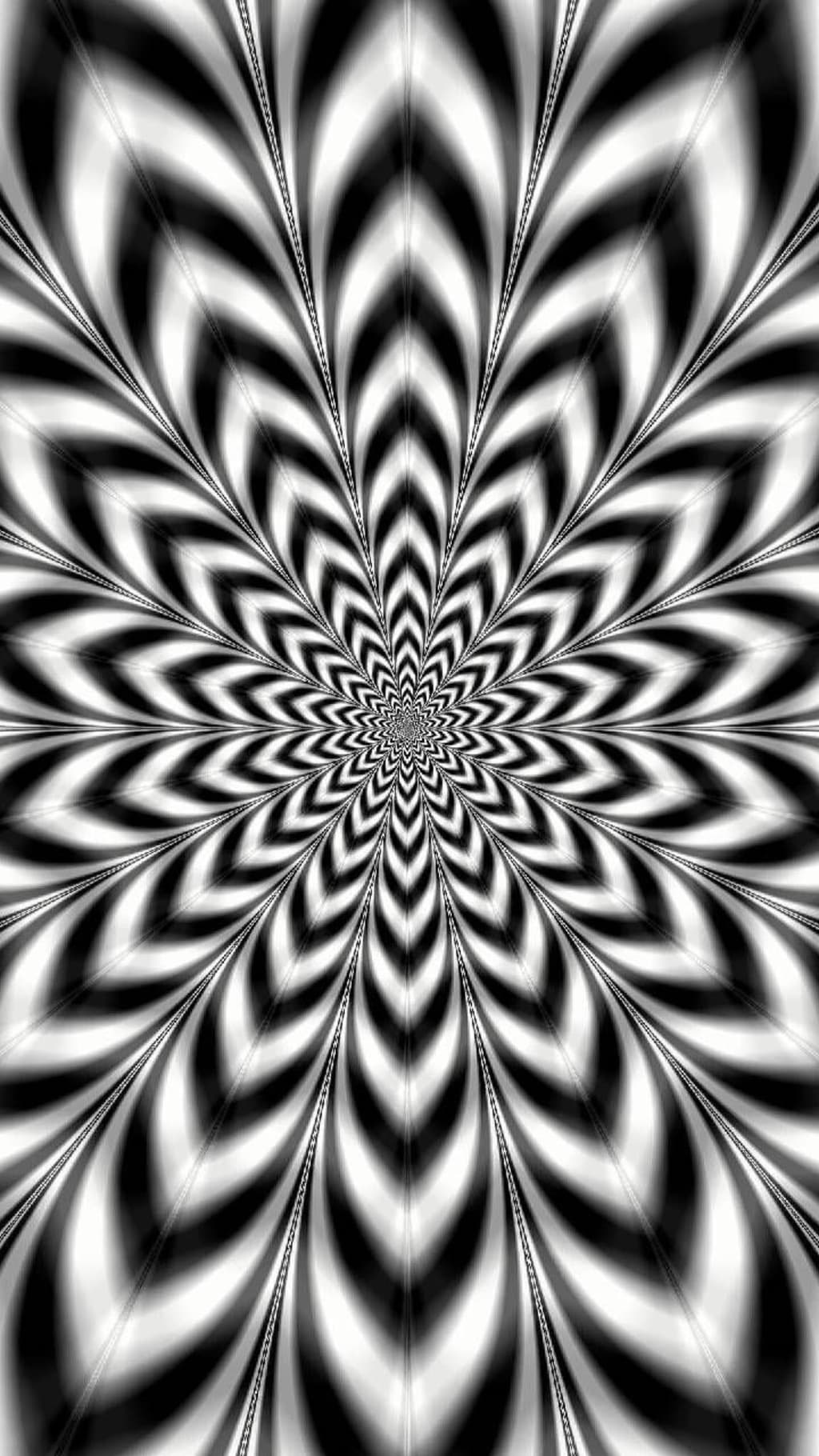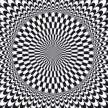FASCINATING FACTS ABOUT OPTICAL ILLUSIONS
ILLUSIONS

OPTICAL ILLUSIONS
An optical illusion is when our brain perceives something differently than it actually is. The reason for this is because our brain is constantly trying to make sense of the world around us using past experiences. This means that sometimes our brain can misinterpret what it is seeing.
There are many different types of optical illusions, but they can generally be grouped into two categories: literal illusions and physiological illusions. Literal illusions are when an object is actually distorted, such as when looking at a curved lines on a piece of paper. Physiological illusions are when our brain perceives something differently than it actually is, such as when we see a moving image when there is none.
Optical illusions can be fun to look at, but they can also teach us about how our brain works. By understanding how optical illusions work, we can better understand how our brain perceives the world around us.
1. What is an optical illusion?
2. What are the different types of optical illusions?
3. How do optical illusions work?
4. Why do we see optical illusions?
5. What are some famous optical illusions?
1. What is an optical illusion?
An optical illusion is an image that appears to be different than it actually is. The most common type of optical illusion is the mirage, which is when light is refracted to create the illusion of water in the desert. Other common optical illusions include the moon illusion, where the moon appears larger when it is near the horizon, and the Ponzo illusion, where parallel lines appear to converge.
Optical illusions occur because our brain is constantly trying to interpret the images we see. In the case of the mirage, our brain interprets the light as water because that is what we are expecting to see. With the moon illusion, our brain interprets the moon as being larger because it is further away. The Ponzo illusion occurs because our brain interprets the converge lines as being further away.
While optical illusions can be fun to look at, they can also be used to trick people. For example, magicians often use optical illusions to create the illusion of things disappearing or appearing. Additionally, optical illusions can be used in art to create interesting and unique effects.
2. What are the different types of optical illusions?
There are a variety of optical illusions, which can generally be grouped into three categories: literal optical illusions, physiological optical illusions, and cognitive illusions.
Literal optical illusions are images that are physically manipulated in order to create the illusion. Physiological optical illusions are those that occur due to the way in which our brain processes information. And finally, cognitive illusions are those that are created due to our perception and assumptions.
Literal optical illusions are probably the most well-known type of optical illusion. common examples of these include the use of mirrors and the Moon Illusion. Mirrors can be used to create illusions of different depths and sizes. The Moon Illusion, on the other hand, is an optical illusion that makes the Moon appear larger when it is near the horizon than when it is high in the sky.
Physiological optical illusions, on the other hand, are caused by the way in which our brain processes information. For example, the Müller-Lyer illusion is caused by the way in which our brain perceives the size of objects. When we see two lines of different lengths, with arrows at the end pointing inwards or outwards, our brain perceives the line with the inward-pointing arrows as being shorter than the line with the outward-pointing arrows, even though they are actually the same length.
Cognitive illusions are those that are created due to our perception and assumptions. A good example of this is the Ponzo illusion. In this illusion, two lines of different lengths are placed next to each other. The line that is placed further away appears to be the longer of the two, when in reality they are both the same length. This is because our brain assumes that objects that are further away from us are larger than those that are closer to us.
There are a variety of different types of optical illusions, which can broadly be grouped into three categories: literal optical illusions, physiological optical illusions, and cognitive illusions. Understanding how these illusions work can help us to better understand how our brain processes information.
3. How do optical illusions work?
How do optical illusions work?
There are many ways in which optical illusions can work. One way is by tricking the brain into perceiving something that is not really there. This can be done by using patterns and color to create an illusion. For example, the optical illusion known as the Ames Room is created by using two-dimensional images to create a three-dimensional space. This trick can fool the brain into thinking that there is more space in the room than there actually is.
Another way that optical illusions can work is by playing with the way the eye perceives depth. This can be done by using contrasting colors or by placing objects in a way that makes them appear closer or further away than they actually are. For example, the optical illusion known as theilitation.
4. Why do we see optical illusions?
Optical illusions occur when we see something that is different from what it actually is. Our brain tries to make sense of the information that our eyes are sending it, but sometimes it can misinterpret what it sees. This can lead to us seeing things that look like they’re moving when they’re actually not, or seeing things as being a different size or shape to what they really are.
There are many different theories as to why we see optical illusions. One theory is that it is our brain’s way of trying to make sense of the world around us. Our brain is constantly trying to interpret the information that our eyes are sending it, and sometimes it can get things wrong.
Another theory is that optical illusions occur because of the way our eyes work. Our eyes are always moving, even when we think they’re not. This is because our eyes are constantly making small, rapid movements called saccades. When our eyes make a saccade, they briefly jump from one point to another. This can sometimes lead to us seeing things that aren’t really there, or seeing things in a different way to how they really are.
Whatever the reason, optical illusions can be fascinating to look at. They can be confusing, frustrating, and even a little bit worrying! But they’re also a reminder of how complex and interesting our brains are.
5. What are some famous optical illusions?
An optical illusion is an illusion caused by the visual system and characterised by visually perceived images that differ from objective reality. The information gathered by the eye is processed in the brain to give rise to the perception of the illusion. Optical illusions occur because our brain is constantly trying to interpret the world around us.
There are many different types of optical illusions, but some of the most famous ones include the following:
The Moon Illusion: This is the illusion that the moon looks larger when it is near the horizon than when it is high up in the sky. This is because when the moon is near the horizon, it is compared to nearby objects, such as trees or houses. However, when the moon is high in the sky, it is compared to distant objects, such as clouds. Our brain then interprets the moon as being larger when it is near the horizon, even though it is actually the same size.
The Müller - Lyer Illusion: This illusion is created by two lines with arrows at the end, pointing inwards or outwards. The line with the arrows pointing inwards appears to be shorter than the line with the arrows pointing outwards, even though they are actually the same length. This is because our brain perceives the inward-pointing arrows as indicating that the line is receding, while the outward-pointing arrows are seen as indicating that the line is coming towards us. As a result, the line with the inward-pointing arrows appears shorter.
The Ebbinghaus Illusion: This is an illusion created by two circles, one surrounded by large circles and the other by small circles. The circle surrounded by large circles appears to be smaller than the one surrounded by small circles, even though they are actually the same size. This is because the larger circles create the illusion of a greater distance between the two circles, while the smaller circles create the illusion of a smaller distance. As a result, the circle surrounded by larger circles appears smaller.
The Ponzo Illusion: This illusion is created by two lines, one above the other. The top line appears to be longer than the bottom line, even though they are actually the same length. This illusion occurs because the top line is seen as being in the distance, while the bottom line is seen as being closer to us. As a result, the top line appears longer.
The Delboeuf Illusion: This illusion is created by two circles, one inside the other. The circle inside appears to be much larger than the circle outside, even though they are actually the same size. This is because the circle inside is seen as being in the foreground, while the circle outside is seen as being in the background. As a result, the circle inside appears much larger.
Optical illusions are fascinating because they show how our brain can interpret the world in different ways. They also highlight the importance of taking into account the context in which we view things, as this can have a
There are many optical illusions that can be used to trick the eye. Some of these illusions are used in everyday life, while others are used for entertainment purposes. Optical illusions can be used to create optical art, or to simply amuse and confuse people. No matter what the purpose, optical illusions are sure to fascinate and delight everyone who sees them.
About the Creator
Sumeiya Hussein Haji
Just a passionate writer






Comments
There are no comments for this story
Be the first to respond and start the conversation.